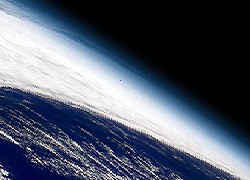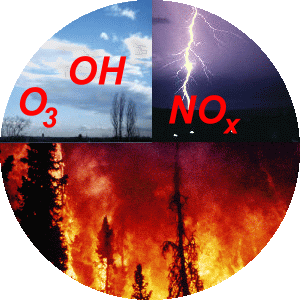 > ENC Master > Climate Encyclopaedia > Lower Atmosphere > basics
> ENC Master > Climate Encyclopaedia > Lower Atmosphere > basics
 |
|
|
|
Lower AtmosphereBasics |
Lower atmosphereWhat goes on in the air surrounding us?A thin layer of air is surrounding our planet. It is becoming less and less dense the higher we go from the Earth's surface. We call this layer the atmosphere. It is a word from Greek roots: atmos = gas, vapour; sphaira = sphere.
|
|
The composition of the air we breathe and its properties are not only essential for the life of plants, animals and human beings. They also define the climate on Earth. Looking upward on a clear day we cannot see anything than a blue sky. However, measuring the temperature, we would observe several changes in the trend if we go up from the ground to 100 km of altitude. Therefore we can say that there are several invisible layers in the atmosphere. The lowermost layer is the one where our life takes place and where the daily weather can be observed. It goes up to 8 km at the poles and 15 km in the tropical regions near the equator. This is the troposphere. Also this word has Greek roots. 'tropo' means, that something changes.
|
In the troposphere the temperature decreases with altitude. This changes at the upper end of the troposphere, called tropopause. You will learn about properties, composition, chemistry and processes in this layer in the texts of this topic. Below, we give you an overview of the units and pages of the Basics part. For a deeper understanding you may choose the Read more section ...
|
|
1. An introduction of the troposphere- Variations with height and temperature
|
2. Greenhouse effect, light and biosphere- Greenhouse effect and light 3. Ozone and nitrogen oxides- Ozone - what is it and what does it do?
|
|
About this page:author: Dr. Elmar Uherek - Max Planck Institute for Chemistry Mainz
|


